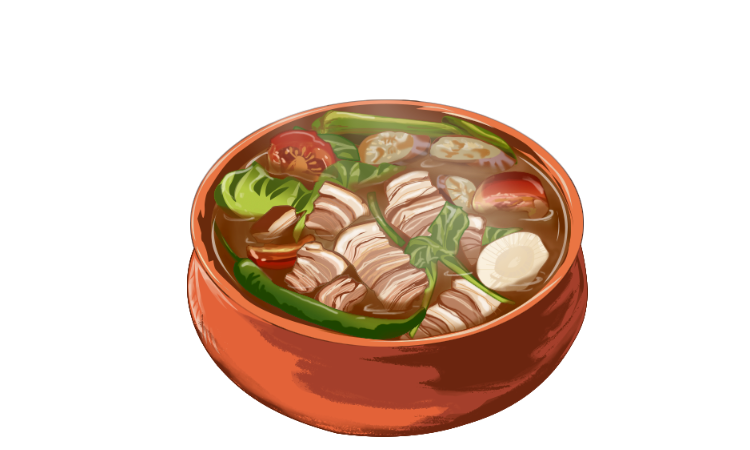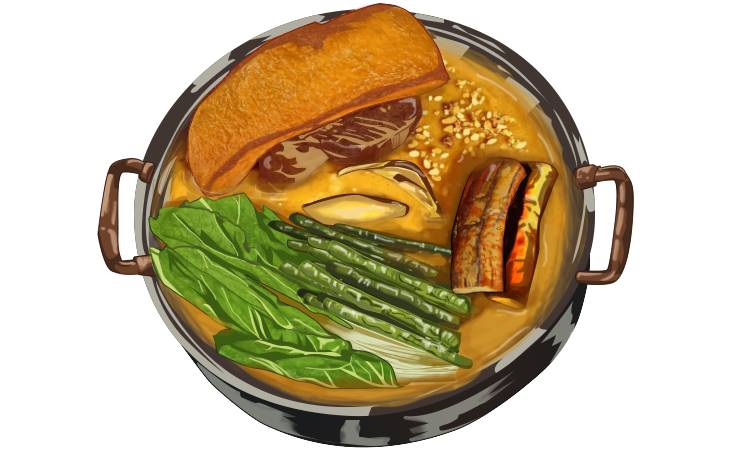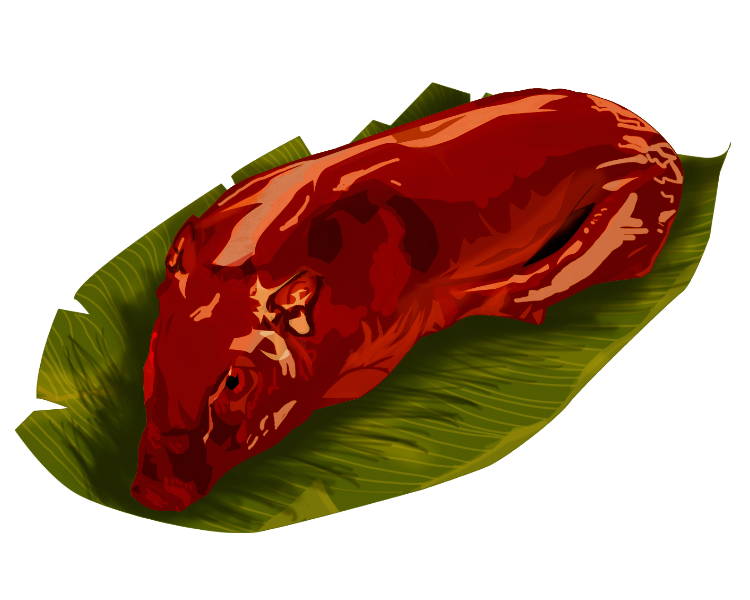1. Adobo
Adobo, a quintessential Filipino dish, is a flavorful stew made with meat (usually chicken or pork) marinated in vinegar, soy sauce, garlic, and spices. Its origins trace back to pre-colonial times, and it has become a symbol of Filipino culinary identity, representing the country's diverse cultural influences.

Trivia: The word "adobo" comes from the Spanish word "adobar," which means "to marinate." Despite its Spanish name, the cooking technique pre-dates the Spanish colonization of the Philippines.
2. Sinigang
Sinigang is a sour soup traditionally made with tamarind, tomatoes, and a variety of vegetables, often accompanied by pork, shrimp, or fish. This dish highlights the Filipino palate's love for sour flavors and showcases the use of indigenous ingredients, making it a staple in Filipino households and a comfort food for many.

Trivia: Sinigang was once dubbed the "national dish of the Philippines" in a 2018 online poll conducted by a local media outlet, besting other popular dishes like adobo and lechon.
3. Kare-Kare
Kare-Kare is a rich stew made with oxtail, tripe, and vegetables, simmered in a savory peanut sauce. Its roots are linked to the Pampanga region and the culinary traditions of the Kapampangan people. The dish is often served with bagoong (fermented shrimp paste), adding a unique umami flavor that reflects the fusion of indigenous and colonial influences.
.png)
Trivia: There is a legend that Kare-Kare was originally an Indian dish introduced to the Philippines by Indian sepoys who settled in the country after the British occupation in the 18th century.
4. Halo-Halo
Halo-Halo, a popular Filipino dessert, is a colorful mix of shaved ice, sweetened fruits, beans, jellies, and leche flan, topped with evaporated milk. This dessert embodies the Filipino spirit of resourcefulness and creativity, combining various ingredients to create a refreshing treat that is enjoyed especially during hot summer months.

Trivia: The name "Halo-Halo" means "mix-mix" in Filipino, reflecting how the dessert is prepared and enjoyed. It also made an appearance on an episode of No Reservations, where Anthony Bourdain enjoyed this vibrant dessert.
5. Lechon
Lechon, a whole roasted pig, is a festive dish served during special occasions and celebrations. Originating from Spanish colonial influence, lechon has become a symbol of Filipino hospitality and communal gatherings, often taking center stage during fiestas and holiday feasts.

Trivia: Lechon from Cebu is considered the best in the country, with even the late celebrity chef Anthony Bourdain proclaiming it as the "best pig ever" during his visit to the Philippines.

